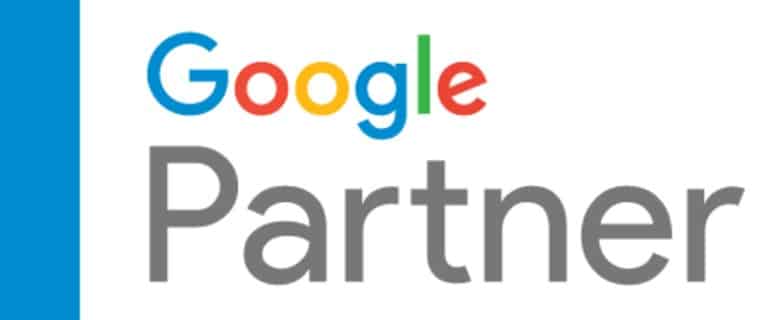In every business owner’s life, there comes a time where they need to tolerate some nerd talking to them about things that will impact their business.
Today, we need to talk nerdy to you.
We figure anything that directly impacts your digital front door is worth knowing about. Your website can make or break your business. And well, this about-to-happen change can virtually demolish your door if you aren’t aware of it and make the needed changes.
It’s called Google’s Core Web Vitals update.
Firstly, Why Should You Care?
Last year, Google announced that these so-called “Core Web Vitals” will be incorporated in their search engine rankings algorithm update of May 2021.
We’re announcing that page experience ranking signals for Google Search will launch in May 2021. This will combine Core Web Vitals and previous UX-related signals.
Learn more: https://t.co/OrrR8LDl1a
— Google Search Central (@googlesearchc) November 10, 2020
Though the update is postponed to mid-June & can probably get delayed further, it will inevitably roll out. Then? Then the sites that don’t comply with the standards Core Web Vitals demand will see a decline in organic traffic.
So, the answer to the question of “Why should I care?” is that if you care about SEO and organic traffic, it’s important to know about Core Web Vitals.
What Are Core Web Vitals?
Core Web Vitals are all about the user experience. These are elements that Google considers crucial. You may not ever think about this (it’s ok. We do!), but take a quick second and think about what kind of experience you want your potential customer to have when they land on your site. Do you want them to have a fast, pleasant, interactive experience or a slow, glitchy, unstable, and intrusive experience?
Yeah, same here.
Now, you’re starting to hone in on what Core Web Vitals are all about. It’s Google’s effort to force us all into having websites that don’t suck. (Check this post out to determine if your website design sucks.)
1. Largest Contentful Paint (LCP)
Largest Content Paint (or LCP) aims to measure the total loading time it takes between the user clicking the URL and seeing almost all the web page content. Currently, the measurement is based on the rendering time of the largest content on the web page, be it an image, video, or text block.

Google considers an LCP of 2.5 seconds or less a good user experience. In other words, if your site’s LCP is over 2.5 seconds, the ranking algorithm will consider it a bad sign after the new update.
2. First Input Delay (FID)
FID deals with the interaction part of the web page. Once the web page loads, the user will most probably interact with the page — scroll, tap a button, click on a link, etc. — and FID is a metric that measures how long it takes before the user-desired interaction’s process starts.

Ideally, your site’s First Input Delay should be under 100 ms. Anything above that and your website’s FID score starts falling short compared to the top ones out there.
3. Cumulative Layout Shift (CLS)
CLS determines the page stability score. To put it better, it shows how stable the page elements remain as it loads. We’ve all visited a website where you tried clicking something, and as soon as you were about to click, the original button/link/etc.moved elsewhere because an ad/image/something loaded or resized? Yeah, well, along with the rest of us, Google officially hates that now.

With CLS score, Google aims to give a negative rating to the sites on which such occurrences are often. A CLS score of 0.1 or less is recommended.
Where to check Core Web Vitals scores?
“Hey, you are saying you must have LCP under 2.5 seconds, FID under 100 ms, and CLS under 0.1, but how would we know?”
So, glad you asked.
There are many tools to check Core Web Vitals scores. We recommend using either Google’s PageSpeed Insights or GT Metrix. Both will show LCP, FID, CLS, and other page experience scores that Google already considers while ranking a site.
How to improve Core Web Vitals scores?
In case your scores didn’t come as desired, you can make a few changes, like:
- Optimizing the image size for a better LCP score.
- Reserving space, i.e., specifying dimensions, for images & embeds that take time to load for a better CLS score.
- Using better server/web hosting to decrease loading time.
- Animating transitions for continuity during layout shifts.
- Optimizing CSS & web fonts to render faster.
- Optimizing & serving Javascripts in smaller chunks to decrease FID.
Practically speaking, shifting to a lightweight theme, removing unnecessary items from the web pages, using a quality caching plugin, and signing up for a CDN (Content Delivery Network) service mostly gets the job done.
If you understood exactly none of that, we get it. If it makes you feel any better, this stuff made us pause and go look some stuff up. Some of this out-nerds even the nerdiest of nerds. Give us a call. We’ll either do our best to put this in English or just work on it for you.
The Real Point Of All This
Google aims to provide the best answer to the searcher’s query. For it, it checks hundreds of factors ranging from the depth of the content to the trustworthiness & authority of the site. Of late, Google is focusing more on the page experience.
Will all of this be a ranking factor for your website? Yep. The question is how much of a ranking factor. Keep in mind, with the hundreds of things Google considers about your website, each factor has its own weight. Much like our fight with the bathroom scale, some things weigh more than others, so no one really knows how much this ranking factor will really weigh. We’ll find out soon enough though.
It was already considering loading speed, mobile-friendliness, HTTPS, intrusive ads/elements, etc., to better the ranking algorithm. This soon-to-roll-out update — the Core Web Vitals update — will add three more elements (LCP, FID, and CLS) to the page experience list. Beware!
If you want help with any aspect of your web design or digital marketing, call the pros at Make It Loud. We’re here to help you win on the web.


